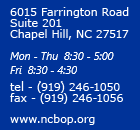Pharmacist FAQsFrequently Asked Questions for Pharmacists on the NC Controlled Substances Reporting System
NC DHHS DRUG CONTROL UNIT ISSUES STATEMENT CONCERNING FULL IMPLEMENTATION OF CONTROLLED SUBSTANCE REPORTING SYSTEM. NC DHHS’ Drug Control Unit has announced that the Controlled Substance Reporting System (“CSRS”) will be fully implemented on July 7, 2021. See the statement here. Board staff’s broader FAQ on the STOP Act also covers this topic and a number of others.
Q: I applied for access to the NC Controlled Substances Reporting System (NC CSRS), but have not received my authorization. Who do I contact? A: The Drug Control Unit of the Department of Health and Human Services administers the NC CSRS. Information and FAQs may be accessed here: http://www.ncdhhs.gov/divisions/mhddsas/ncdcu/csrs and pharmacy personnel with questions about CSRS access should contact DHHS’ Drug Control Unit: nccsrs@dhhs.nc.gov. ----------------------------------------------------------------------------------- Q: What is the "STOP" Act and when does it go into effect? A: The STOP (Strengthen Opioid Misuse Prevention) Act is an effort to combat the opioid abuse and misuse epidemic. Please refer to this FAQ guidance for more information. ----------------------------------------------------------------------------------- WEDNESDAY, JANUARY 24, 2018 NORTH CAROLINA CONTROLLED SUBSTANCE REPORTING SYSTEM IS NOW CONNECTED TO PMP INTERCONNECT. The North Carolina CSRS is now connected to PMP Interconnect (http://www.ncnn.com/edit-news/10195-more-money-going-to-fight-opioids-), which is a program developed by the National Association of Boards of Pharmacy that allows data sharing among states’ prescription monitoring programs. This enhancement provides a significant new resource for pharmacists exercising their professional judgment when dispensing controlled substances. NC DHHS staff advise that pharmacists may access data from other states by selecting the “Multiple State Query” link on the left side of the CSRS query page. A menu of available states will appear in a “Disclosing States” field. Some states (including Virginia) are already accessible. Other states will be added in the near future. Pharmacists with questions about the data sharing features are encouraged to contact DHHS’ Drug Control Unit, which directly administers the CSRS: nccsrs@dhhs.nc.gov. ----------------------------------------------------------------------------------- MARCH 2016: BOARD OF PHARMACY AND UNC ESHELMAN SCHOOL OF PHARMACY PARTNER TO PROVIDE PHARMACISTS WITH A NO-COST CONTINUING EDUCATION COURSE ON USE OF THE NORTH CAROLINA CONTROLLED SUBSTANCES REPORTING SYSTEM. The Board of Pharmacy and The Academy at the UNC Eshelman School of Pharmacy have partnered to build a continuing education program for pharmacists on the North Carolina Controlled Substances Reporting System (“CSRS”). The on-line CE module educates pharmacists on the process for activating CSRS access, the menu system for acquiring data in the CSRS, and, perhaps most importantly, provides a series of interactive case scenarios designed to guide pharmacists in the appropriate use of CSRS data in various practice settings. To access the program, which is available without cost to pharmacists, please click the link below and complete each section of the website. At the end of the program, you will have an opportunity to take a post-assessment test and claim one (1) hour of distance based CE credit. Link: https://apps.cips.unc.edu/csrs/#/csrs_home. ----------------------------------------------------------------------------------- Q: Are there any exemptions to Controlled Substance Reporting System requirements regarding distribution of controlled substance samples? A: The North Carolina Controlled Substance Reporting System statute provides an express exemption for Schedule V non-narcotic, non-anorectic controlled substance samples: “A dispenser shall not be required to report instances in which a Schedule V non-narcotic, non-anorectic Schedule V controlled substance is provided directly to the ultimate user for the purpose of assessing a therapeutic response when prescribed according to indications approved by the United States Food and Drug Administration.” Pharmacies are, of course, prohibited by federal law from dispensing prescription drug samples of any sort. This reporting exemption, then, only applies in practical terms to physicians or other health care providers who are permitted by federal law to provide samples to patients. For information about storage, see below and http://www.deadiversion.usdoj.gov/faq/general.htm#sec-1. ----------------------------------------------------------------------------------- Q: How must controlled substances maintained in a practitioner’s office (as opposed to a pharmacy) for dispensing or administration be stored? A: The federal Controlled Substances Act and regulations provide that all controlled substances maintained in a practitioner’s office (as opposed to a pharmacy) for dispensing or administration should be stored in a locked cabinet or other secure storage container with limited access by the office staff. http://www.deadiversion.usdoj.gov/faq/general.htm#sec-1 ----------------------------------------------------------------------------------- Q: What is the Board's position on pharmacists' use of the North Carolina Controlled Substance Reporting System ("NCCSRS")? A: As North Carolina pharmacists are aware, they are authorized to access the NCCSRS and to use data in that system to inform professional judgment and practice. The Board has issued the following statement concerning pharmacists’ NCCSRS registration, use, and accessibility: http://www.ncbop.org/PDF/NCBOPStatementConcerningCSRSUseOct2014.pdf.
|

